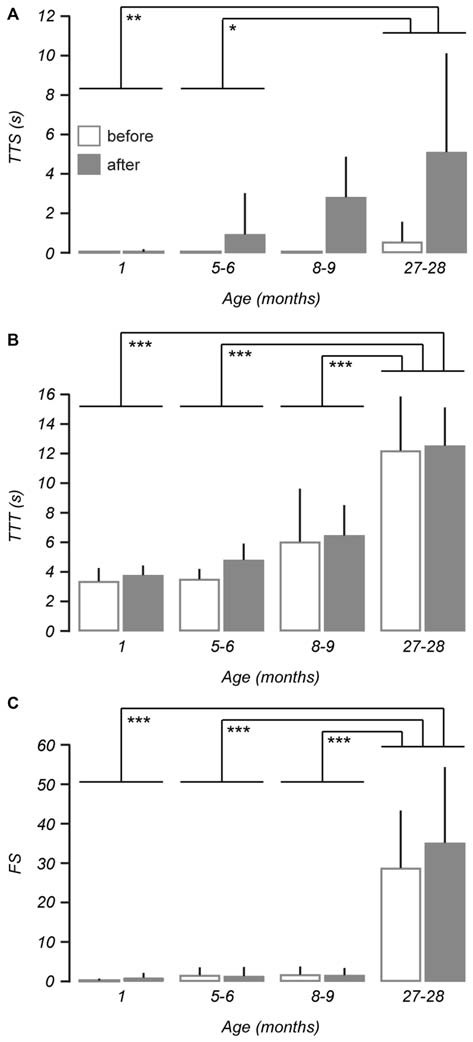Figure 3.

Balance and motor performance is impaired in older mice after vestibular stimulation. Age-related changes were assessed using three different measures of balance beam performance across 1 (n = 9), 5–6 (n = 7), 8–9 (n = 7) and 27–28-month-old mice (n = 8). (A) The effect of the vestibular stimulus on time to start (TTS) walking was increased with age such that 27–28-month-old mice were more affected than 1-month-old and 5–6-month-old mice. (B) Changes observed in measurements of time to traverse (TTT) as a result of the vestibular stimulus were not age-dependent, however differences were apparent between 27–28-month-old mice and other age groups. (C) An age-related effect of the vestibular stimulus was also identified by the number of foot slips (FS). Error bars = SD, *p < 0.05, **p < 0.01, ***p ≤ 0.001.
